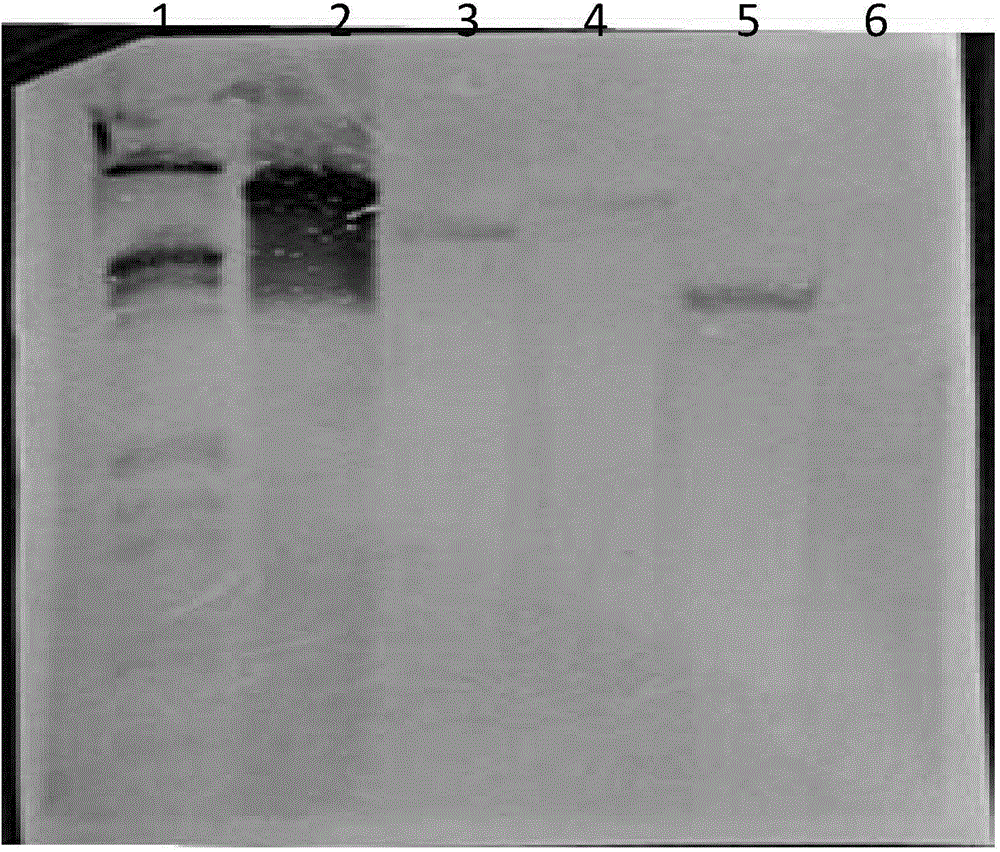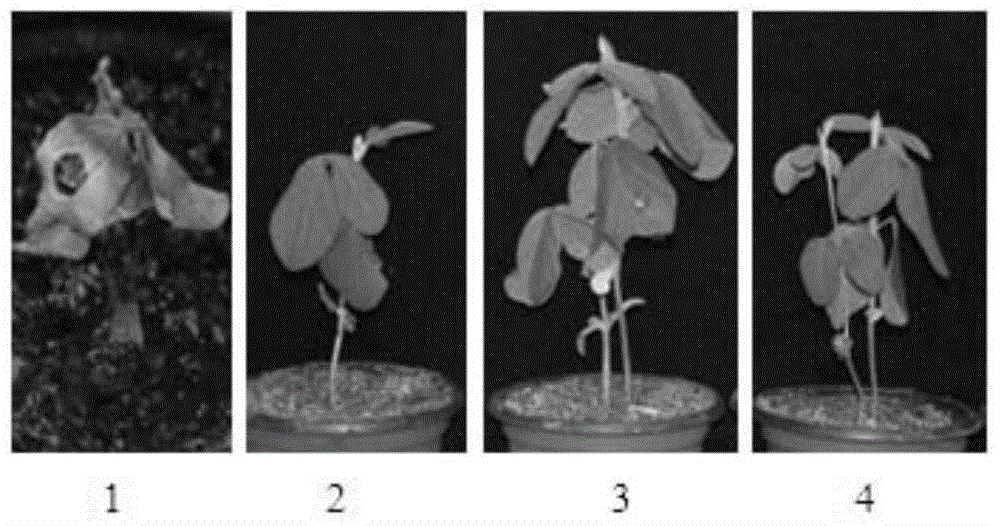Transgenic glyphosate-resistant soybeans as well as preparation method and application thereof
A technology for transgenic soybeans and soybeans, applied in the field of plant genetic engineering technology or breeding, can solve the problems of polluting the environment, small scope of use, and low efficacy.
- Summary
- Abstract
- Description
- Claims
- Application Information
AI Technical Summary
Problems solved by technology
Method used
Image
Examples
Embodiment 1
[0063] Embodiment 1, genetic transformation of transgenic soybean
[0064] 1. Obtaining the recombinant vector
[0065] (1) According to the optimized synthetic sequence of A.thaliana-rbcS plus G2-EPSPS gene, redesign the PCR primers, with the restriction site XbaI in the upstream and SacI in the downstream, and PCR amplify rbcS-G2- The EPSPS fragment (nucleotides 8204-9784 from the 5' end of Sequence 1) was connected to the T-A vector to obtain the plasmid prbcS-G2-EPSPS, which was digested and sequenced for verification.
[0066] (2) pBI121 (Wang Huaxin, Cao Jiashu, Xiang Xun et al. Construction of pBI121 expression vector and rapid identification of transformed plants. Journal of Zhejiang University (Agriculture and Life Sciences), 2008, 34(2): 137-142; public available Obtained from the Institute of Crop Science, Chinese Academy of Agricultural Sciences) and pCAMBIA2300 (Gong Yuanyong, Feng Yongkun, Ni Wanchao, etc. Construction and verification of plant expression vector...
Embodiment 2
[0085] Embodiment 2, glyphosate resistance analysis of transgenic soybean
[0086] The glyphosate resistance analysis of successive generations of the T0 transgenic soybean ZH10-6 obtained in Example 1 found that it has significantly more resistance to glyphosate than the non-transgenic control Zhonghuang No. 10, as follows:
[0087] Collect T0 generation transgenic soybean ZH10-6 seeds, sow, and obtain T1 generation transgenic soybean ZH10-6, which is smeared with 1 μl glyphosate isopropylamine salt (Roundup) per plant at the seedling stage (cotyledons unearthed and true leaves are not fully expanded), 2 Investigation of drug damage after a week.
[0088] The phenotype of non-resistant plants is dehydration and chlorosis of leaves, curling and shriveling of leaves, and necrosis of top meristem until the whole plant dies; the phenotype of resistant plants is vigorous growth, leaves do not chlorosis, curl or shrink .
[0089] The result is as image 3 As shown, 1: non-resist...
Embodiment 3
[0097] Example 3. Analysis of exogenous DNA copy number and molecular integration stability in transgenic soybean
[0098] 1. Copy number of integrated exogenous T-DNA
[0099] The copy numbers of exogenous DNA fragments integrated in the genome of T1 transgenic soybean ZH10-6 were determined by Southern blotting analysis of restriction fragments extending beyond the left and right border sequences of the transformation vectors used.
[0100] The probe for Southern blotting analysis is to select the carrier DNA sequence design probe (sequence 6) of 338bp from the carrier T-DNA region, and refer to the instruction manual of the PCR method DIG labeling kit produced by Beijing Meilaibo Medical Technology Co., Ltd., the place of preparation Goxigenin-labeled probes.
[0101] Referring to the instruction manual of the Digoxin hybridization kit produced by Beijing Meilaibo Medical Technology Co., Ltd., the recombinant plasmid pKT-rGE used was used as a positive control, and the gen...
PUM
 Login to View More
Login to View More Abstract
Description
Claims
Application Information
 Login to View More
Login to View More - R&D
- Intellectual Property
- Life Sciences
- Materials
- Tech Scout
- Unparalleled Data Quality
- Higher Quality Content
- 60% Fewer Hallucinations
Browse by: Latest US Patents, China's latest patents, Technical Efficacy Thesaurus, Application Domain, Technology Topic, Popular Technical Reports.
© 2025 PatSnap. All rights reserved.Legal|Privacy policy|Modern Slavery Act Transparency Statement|Sitemap|About US| Contact US: help@patsnap.com



